Historical milestones of the technical revolution. Taming Nitrogen
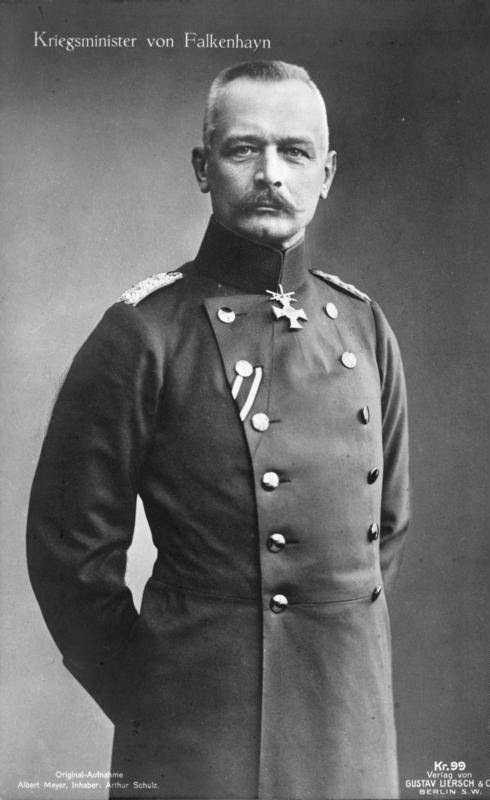
At the end of 1914, shortly after the outbreak of World War I, a mortal threat loomed over the German army. No one knew about this danger - neither soldiers at the front, nor civilians in the rear. The enemy did not know about her either. The Germans pressed the allies in both Belgium and France, and they could not have imagined that the overwhelming German army was about to suffer a complete catastrophe.
Only the German War Ministry and General Staff knew the truth.
From morning till night they rushed about, counted something and counted endlessly. Telephones and dispatches from the front rang continuously, and from all over the country poured on the tables, and one was more alarming in the other:
- Warehouses are empty!
- Put the last tons into the devices!
“There is no more than five weeks left in stock.”
“There are four weeks left.”
- There will be enough saltpeter for three weeks. It also takes into account that which is in transit, in wagons, and that which is available in warehouses, and that which is already loaded into the factory apparatus. In three weeks, everything will be over ...
Meanwhile, the war was just flaring up.
There were endless demands from the front: cartridges, shells, shells! But for the production of cartridges and shells, gunpowder and explosives are needed. And for the production of gunpowder and explosives, nitric acid is required. And nitric acid was obtained from nitrate. And saltpeter ...
Inexhaustible reserves of nitrate were located on the Pacific coast, in distant Chile. And not a single gram of it got any more into Germany, blocked by the English naval fleet.
Why didn’t the Germans take care of stocking up on nitrate in advance? Because they did not expect the war to be so long. The Ministry of War prepared cannons, rifles, shells, cartridges - everything that was directly needed for the army. The Germans believed that they procured enough for no less than a year. Well, the war, in their opinion, was supposed to end in a few months. But life completely overturned their calculations.
In the very first days, the battles unfolded with such force that the stocks of shells began to decline at lightning speed. Thousands of tons of lead and iron erupted into battlefields in one day. That which relied on a month was spent a week, or even a day. People invented machine guns and quick-firing guns, but they could not imagine in advance how much this would change the war.
German manufacturers of gunpowder were the first to feel the burden of miscalculation.
- More gunpowder! More TNT! More melinite! - demanded from them the War Ministry.
- Nitre! Give nitrate! - unanimously answered the manufacturers.
And saltpeter was on the other side of the equator, in the reach of Chile ...
Government agents scoured all over Germany, raided the estates of the landlords, on peasant farms. Each bag of nitrogen fertilizer was solemnly requisitioned. After all, saltpeter is used not only for the production of explosives, but also for fertilizing fields ..
Everything was in vain. The catastrophe was approaching Germany. The day was approaching inexorably when its millions of armies, stationed in Belgium, France and Poland, were supposed to be completely unarmed, although they had tens of thousands of perfectly functioning machine guns, guns, howitzers.
But long before the war ended, another, completely inexhaustible source of nitrogen raw materials was at the disposal of Germany. This source was more than enough in Germany for the production of explosives and fertilizers. It is thousands of times richer than Chilean deposits and infinitely more accessible. It is enough for all countries of the globe, for peace and war, for all times and for all peoples. This source delayed the military defeat of Germany in World War I.
Twelve years before the events described, in the fall of 1898, the British Association of Naturalists gathered in the city of Bristol. The congress was opened by the president of the society, physicist William Crookes.
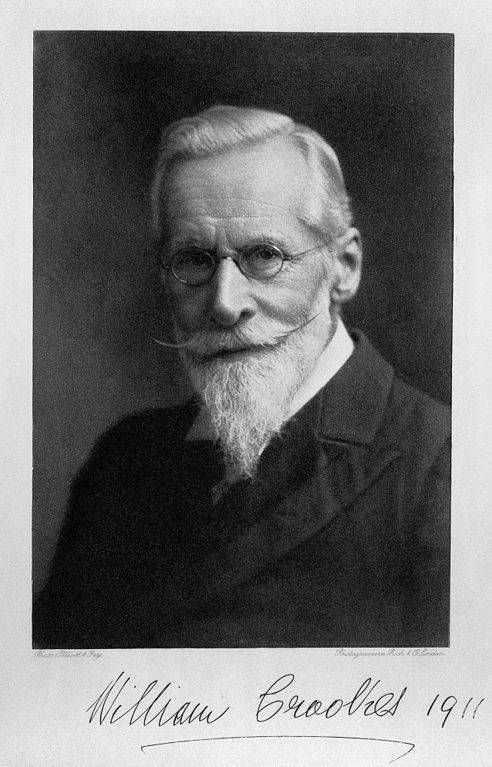
It was expected that he, as usual, would talk about new discoveries, about the most important scientific problems that researchers in England and other countries are working on. But Crookes went to the podium to make a formidable warning. Through the heads of the congress participants, he addressed to all of humanity with a sensational speech, which sounded like a distress signal.
We need nitrogen. Where to get it?
Clover gives a certain amount of nitrogen, but it has already been used for several years, and this does not save the situation.
We fertilize the fields with nitrate, but its reserves in Chile are not unlimited. In twenty to thirty years they will be exhausted. And then the world will be on the edge of the abyss.
Thirty years is a moment in the life of nations. Many of those present here, perhaps, will also sit at the next congress of the British Association in 1928, and then they will see how correct my predictions were. There is, however, a ray of light in this gloomy picture. Nitrogen in a free state as much as you like on earth.
We must learn to bind it, to bind at all costs!
The chemist must come to the rescue of humanity, over which the threat looms. Only chemistry can prevent starvation and create abundance on earth ...
Although nitrogen means “lifeless,” life is impossible without it. All the tissues of our body, our muscles, brain, blood - everything is built from substances containing nitrogen. Where does he get from there? Is it out of thin air? No, the nitrogen that we swallow while breathing comes out of our lungs is completely unchanged. Each day, each of us inhales about 10 kilograms of atmospheric nitrogen, but not a single particle of it is absorbed by our body!
We do not know how to use free, neutral nitrogen. Breathing does not saturate us. We consume only earlier, without us bound nitrogen, that which is contained in animal and vegetable food. Each cutlet or scrambled eggs that we eat is a nitrogen ration, which we took in finished form from animals. And animals take bound nitrogen from plants that extract it from the soil. It enters the soil from manure, from rotting plant debris.
Only some bacteria can directly extract the necessary nitrogen for life from the air. They “eat” free nitrogen, they bind it, turn it into complex nitrogenous substances from which a living cell is built. Such bacteria in large numbers live in soil and on tubers of leguminous plants - clover, alfalfa. This is why clover is so beneficial to sow: it enriches the soil with bound nitrogen taken directly from the air.
But clover is usually not enough to make up for the loss of nitrogenous substances in the ground. And so people found in faraway Chile huge deposits of fossil nitrogen salt - nitrate. This precious substance, in which "captured" nitrogen sits, began to be transported around the world. Part went to military enterprises, part - to the fields, for fertilizer.
And at the same time, a boundless ocean of free nitrogen flows over people's heads ...
Nitrogen ... The brightest fire instantly goes out in it. Animals die in it from suffocation.
Four fifths of lifeless, inert nitrogen consists of our entire atmosphere, and one fifth of the air is life-giving and active oxygen. But although nitrogen is closely mixed with oxygen, it almost never comes into contact with it.
If, in some way, nitrogen can still be “captured”, bound with oxygen, then this compound takes on terrible power. Lazy nitrogen then becomes energetic and wild. He strives at all costs to break free again, free himself from the violent connection with oxygen. This is the basis for the action of almost all explosives. In gunpowder, dynamite, trotyl, melinite, nitrogen is held captive. He waits only for the first spark, push, detonation, to break the bonds that hold him near oxygen. And the active oxygen released at the same time as it is pounced on the combustible base of the explosive and instantly burns it. So there is an explosion.
But if nitrogen is released very easily and simply, it is incredibly difficult to bind it.
Seven years after William Crookes made such a passionate appeal, a man’s hand tamed nitrogen for the first time.
In Norway, not far from a fairly powerful hydroelectric station, two researchers, Professor Birkeland and engineer Eide, built an unusual plant - a plant for burning air nitrogen.
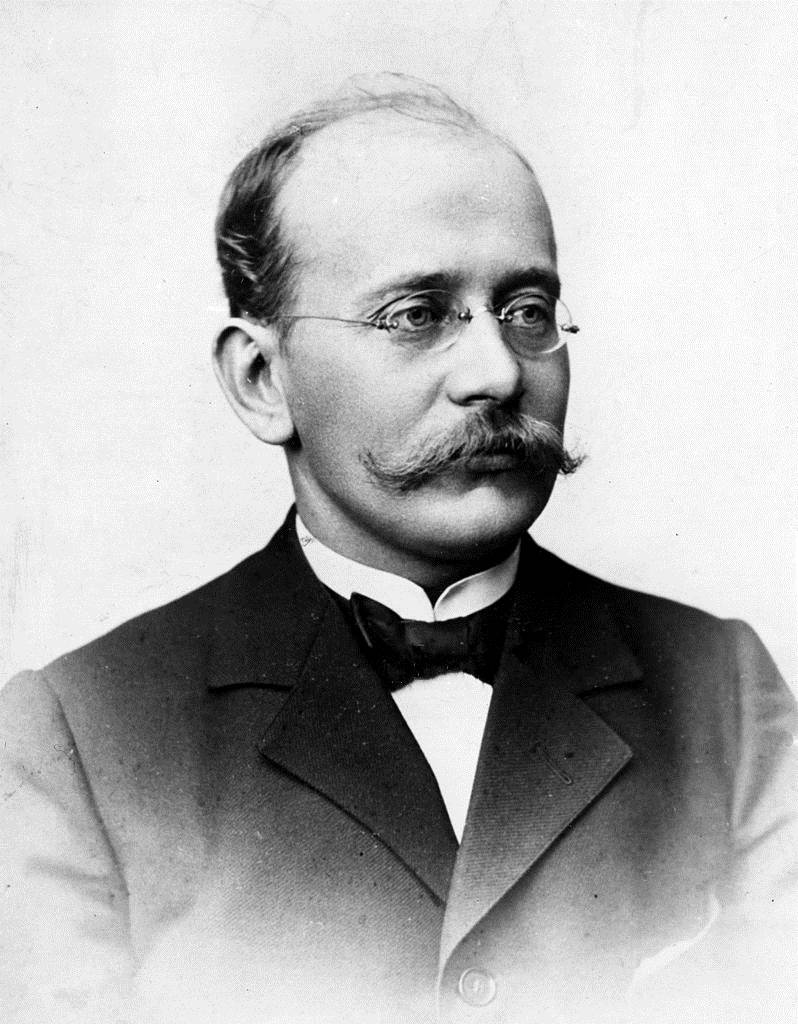
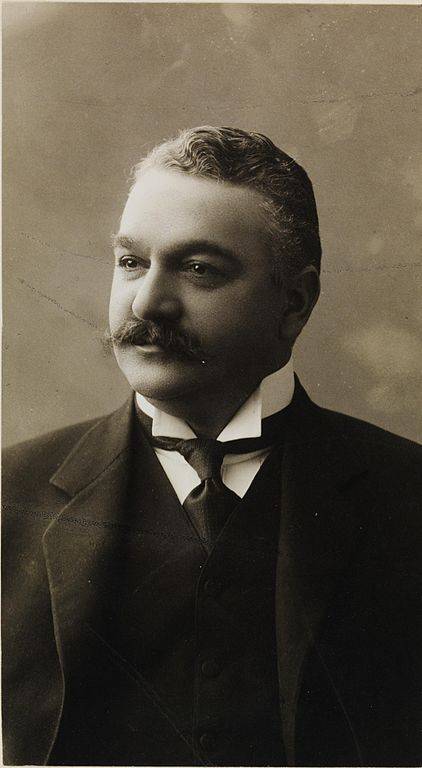
At the plant there were round electric furnaces, and air nitrogen burned in them, like refueling fuel. After all, the air surrounding us is a combustible mixture. It contains any amount of oxygen needed for combustion, and nitrogen, which can be forced to combine with oxygen, that is, burn. Incredible efforts are required to make it burn.
How did they light the nitrogen of Birkeland and Eide? They borrowed their way from nature.
In any thunderstorm, whenever lightning strikes, part of the nitrogen burns out. Powerful electric discharges not only turn oxygen into odorous ozone, but also remove “lazy” nitrogen from equilibrium, causing it to flash, to combine with oxygen.
Did you think, watching a bright flash of lightning, that the atmosphere itself burns?
When nitrogen is burned, corrosive nitrogen oxides are formed, and they immediately dissolve in raindrops. It turns out real nitric acid, which spills on the ground. We do not notice this just because it is very diluted. Nevertheless, it falls not so little: an average of about 10 kilograms per hectare annually.
At Birkeland and Eide, lightning was created artificially.
A powerful electric current was supplied to two copper rods mounted one against the other. Between the rods there was a dazzling voltaic arc. With the help of a strong electromagnet, this arc was inflated, stretched so that a huge circle of fire was obtained, two human height high. And in this round lightning, where the temperature reached 4500 degrees, air was continuously blown.
The nitrogen that got into such a hot alteration had no choice but to combine with oxygen.
However, as soon as he left the furnace, he immediately sought to escape from captivity: nitrogen oxides immediately after their occurrence immediately began to decompose into its constituent parts - into nitrogen and oxygen. So that the nitrogen associated with such labor would not regain freedom, it was necessary to instantly, with great speed, cool the burned air. Only then was it possible to protect nitrogen oxides from decomposition. Then they were dissolved in water and treated with lime.
So Birkeland and Eide received artificial nitrate - nitrate from the air.
This was the first gap in the ring of the hungry blockade, imperceptibly approaching the world.
But the production of new nitrate still developed tightly. When burning air, a lot of electric energy was consumed, and this greatly increased the cost of nitrate. Only in Norway and in other places where there are many mountain rivers and waterfalls that provide cheap energy, the production of air fertilizer still paid off somehow.
Birkeland and Eide actually proved that William Crookes' call for chemists was not in vain. Nevertheless, natural Chilean nitrate, the reserves of which were slowly but surely depleted, still reigned in agriculture and in the military industry of most countries of the world.
At a time when Birkeland and Eide were just about to build a plant to burn air nitrogen, Fritz Haber made an attempt to bind nitrogen in a different way.
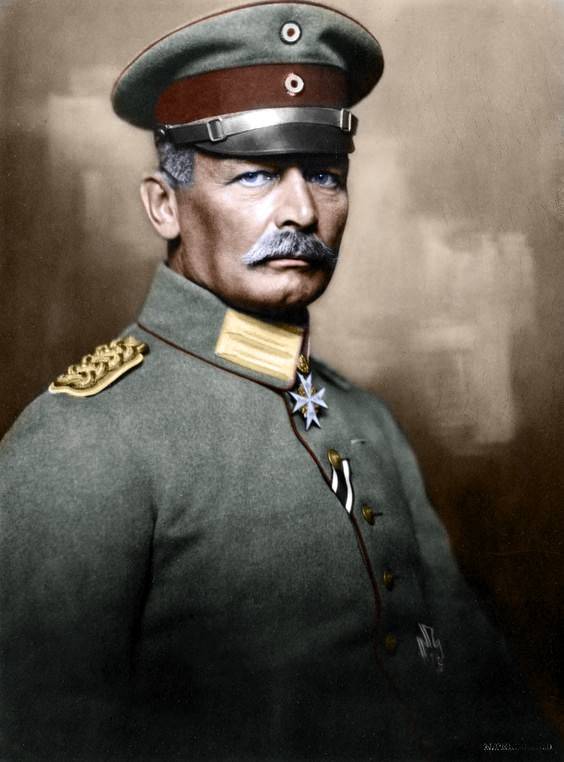
At first, he conducted a very modest laboratory experiment: a small porcelain tube was heated with an electric current to 1000 degrees and passed through it a mixture of two gases - nitrogen and hydrogen.
What should have come of it?
In all textbooks and chemical reference books it was firmly and decisively written that nitrogen never combines with hydrogen under any circumstances.
Having carefully examined the gas that escaped from the porcelain tube, Gaber was convinced that this was almost correct: the mixture of nitrogen and hydrogen did not change at all due to the action of high temperature, except for an insignificant part - one five-thousandth part of this mixture. A tiny fraction of nitrogen nevertheless bound, united, forming a small bubble of a new complex substance - ammonia.
Gaber decided that for a start this is not so bad at all. If nitrogen can even join with hydrogen at all, then we must try to find such means that would make it combine easily and quickly.
For several years in a row, Gaber persistently sought these funds. He set up countless experiments, made complex theoretical calculations, and ultimately achieved his goal. Gaber concluded that the nitrogen-hydrogen mixture had to be compressed strongly before being heated. And in fact, due to the high pressure, nitrogen has become much better connected with hydrogen.
Then Gaber picked up a catalyst for this reaction. (Catalysts are called substances that, by their presence alone, can accelerate various chemical transformations.) And under the triple influence of high temperature, high pressure and catalyst, nitrogen surrendered. In a thick-walled laboratory apparatus, similar to a barrel of an outlandish cannon, nitrogen, compressed to 200 atmospheres and heated to 500-600 degrees, actively connected with hydrogen, forming odorous caustic ammonia.
In 1908, Gaber proposed to one of the largest chemical plants in Germany to begin production of ammonia from air by his method.
Practical industrialists at first did not want to hear about it. High pressure ... High temperature ... Who would venture to start a production that requires devices like artillery pieces? In the barrel of the gun at the time of the shot there is a monstrous pressure of 3 thousand atmospheres and a temperature of 2500 degrees. But at least it only lasts a hundredth of a second! And Gaber proposed building factory machines that would work continuously, day and night, under tremendous pressure and at high temperature. And in addition it was required that they did not leak anywhere, that all connections were tight, tight, like any compressed gas cylinder. Where to find such a durable metal that would satisfy such unheard of requirements?
Nevertheless, Gaber persuaded the engineers to come to look at his laboratory installation.
Engineers arrived, convinced in advance that they were wasting time. But when nitrogen in their eyes, taken directly from the air, turned into caustic ammonia, from which it plucked in the nose and tears flowed, their hearts trembled. It was too amazing, too wonderful! As experienced chemists, company representatives knew quite well what free nitrogen was, and this small laboratory miracle promised them huge profits.
The agreement has taken place.
Engineer Karl Bosch, undertook to put in the factory production of ammonia according to the method of Haber.
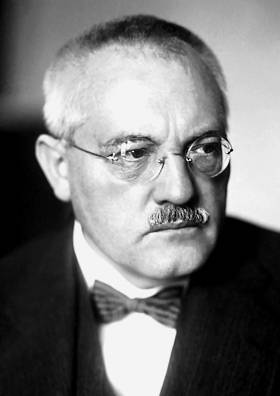
He had to overcome unheard of difficulties. The Haber catalyst was too gentle and sensitive to factory work. The smallest impurities in the gas “poisoned” him, and he became unusable. I had to find sophisticated, but cheap ways to clean the gas. I had to select new catalysts, at the same time highly active, but crude and insensitive to “poisons”.
However, the most trouble was delivered by the apparatus for ammonia production itself.
There was no such metal in the world, such steel, which could withstand heat and enormous pressure and the action of gases for a long time. There was therefore nothing left to do, how to create a new metallurgy, to look for new steel compositions.
But after much work, it was possible to produce heavy-duty steel, a miracle metal. Heated to a temperature of 500-600 degrees, under pressure that would be enough to tear ordinary steel to shreds, like paper, this amazing metal steadfastly carried its heavy service. Suddenly a new misfortune: it turns out that hydrogen was leaking from inside the apparatus!
This brisk, nosy gas - the lightest, thinnest substance in the world, penetrated through dense metal, like water through a sieve. In addition, he chemically acted on the metal, making it brittle. At the cost of tremendous efforts, Bosch managed to cope with this obstacle and with many others. In 1913, in the city of Oppau, the first plant was finally launched, producing ammonia according to the method of Haber. And then, already during the war, when they learned to convert ammonia into nitric acid, Germany began to feverishly build more and more new plants for the production of ammonia from the air, one more powerful than the other. This delayed the military defeat of Germany in the First World War. What else, and air in Germany, blocked on all sides, was enough ...
The Haber method has long been the property of all advanced industrial countries. He easily supplanted the way Birkeland and Eide. Chilean nitrate also lost its former meaning. Why, in fact, carry substance from the end of the world that can be obtained at home, anywhere, anywhere? Chile’s nitrate production fell from 2,5 million tons in 1925 (the cost of one ton of raw materials was $ 45) to 800 thousand tons sold at $ 19 per ton in 1934. The chemist, as Crookes once predicted, really saved the world from the threat of hunger.
The story would not be complete if we had not fully traced the fate of its main characters: Dr. Fritz Haber and chemical engineer Karl Bosch.
Fritz Gaber is one of the greatest chemists of our time. He has done more for Germany than anyone else, more than all its generals, more than its commanders-in-chief. After all, he supplied the army and agriculture with nitrogen for the entire time of the war! If not for Gaber, it is unlikely that Germany would have been able to hold out for more than four years in the grip of blockade and famine.
Gaber played a key role in the development of chemical weapons during the first world war. Shortly after the outbreak of war, he headed the chemical department of the War Department. Part of his work included the development of gas masks with adsorbent filters. He led teams developing the use of chlorine and other deadly trench warfare gases.
Talking about war and peace, Gaber once said: “In peacetime, a scientist belongs to the world, but during a war he belongs to his country.” Gaber was a German patriot and was proud of his help to the country during the First World War, for which the Kaiser awarded the scientist, not subject to age of military service, the rank of captain.
On May 2, 1915, Gaber's wife committed suicide. She shot herself with a gun belonging to him, having made such a decision due to the fact that Gaber personally controlled the first successful use of chlorine during the Second Battle of Ypres on April 22, 1915.
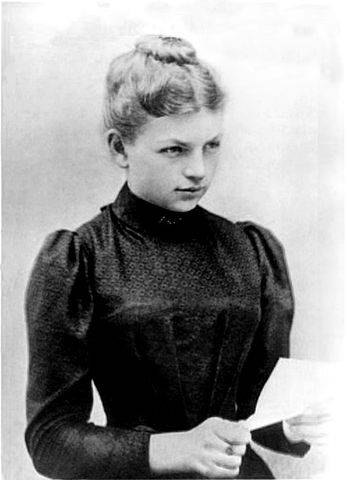
In 1933, the Nazis came to power in Germany. At the Haber Institute, famous all over the world for its remarkable scientific work, people appeared in brown uniforms. And the fierce purge began. The laboratories were empty, dozens of scientists were thrown into the street, expelled from the country, and some ended up in a concentration camp. Soon, the most sixty-five-year-old Fritz Gaber, a Nobel laureate, a hero of the First World War, had to follow his staff. Although he would have been a zealous Lutheran for more than forty years, he was reminded of a "non-Aryan" dad. In old age, with a sore heart, offended and humiliated, the great scientist found himself in exile. The University of the English city of Cambridge hastened to provide the famous exile with a shelter and a laboratory. But the blow dealt to him was too strong. Gaber’s career is over. In January 1934, he died in a foreign land from a heart attack.
Subsequently, after World War II, in 1946 his son, German Gaber, will commit suicide because of the awareness of the troubles brought by the substance Cyclone B, invented in his father’s laboratory in 1920. German Nazis used Cyclone B to destroy prisoners in the gas chambers of Auschwitz and other death camps.
It was not easy for Carl Bosch.
He served at the aniline dye and fertilizer plant, which also produced explosive components and BASF phosgene gas, located near the town of Oppau, when an explosion occurred on September 21, 1921.
The immediate cause of the tragedy was detonation when using explosives to crush the packed stocks of ammonium sulfate and nitrate, stored in anticipation of a seasonal peak in sales of agricultural fertilizers in a nearby quarried clay quarry. Prior to this, cardboard tubes with black powder, which did not cause detonation, were used for a long time for these purposes. However, the blasting contractor decided to save money and used a more powerful explosive, a rekarok (a mixture of bertholite salt and gasoline), to initiate detonation of the explosive mixture to loosen packed salts. 12 thousand tons of a mixture of ammonium sulfate and nitrate exploded, the explosion energy was estimated at 4-5 kilotons of TNT equivalent.
In Oppau, out of 1000 buildings, 800 were destroyed, 7500 people were left homeless. The explosion destroyed the nearby villages of Frankenthal and Edigheim. Trains at nearby stations were thrown off the track, and within a radius of 70 km, including the cities of Ludwigshafen and Mannheim, windows were broken in all buildings, the sound of the explosion was heard even in Munich, located 300 km away. After the explosion, which left a funnel measuring 90 by 125 meters and a depth of 20 meters, a strong fire started, which was extinguished only a few days later. 561 people became victims of the disaster, more than one and a half thousand were injured and burned.
Here are some photos from the scene of the tragedy.
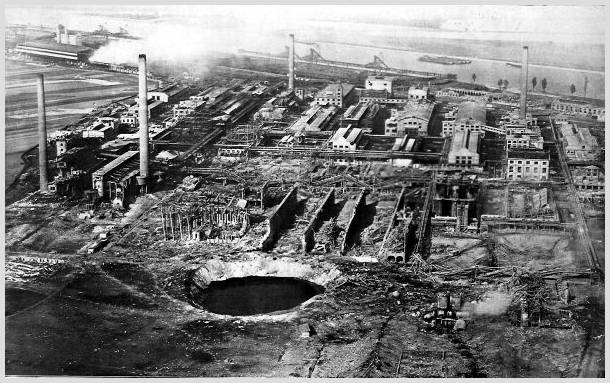
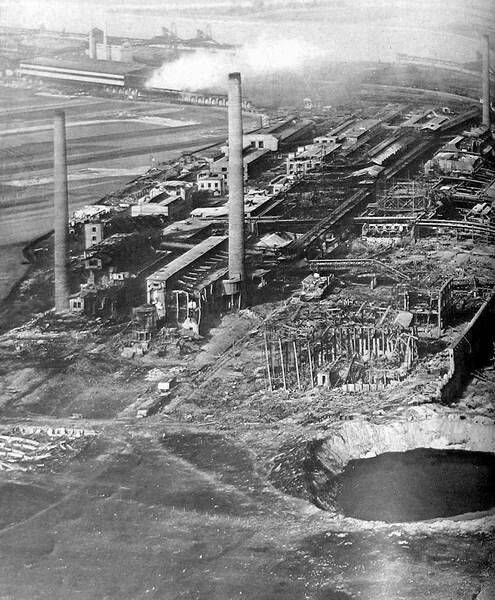
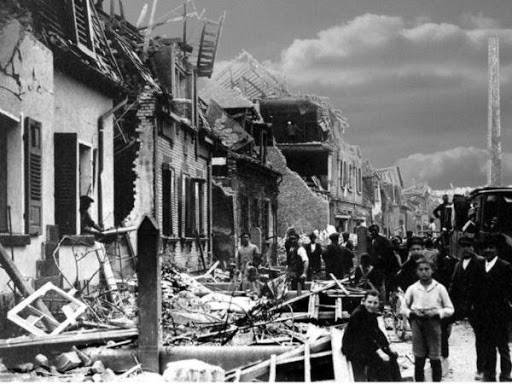
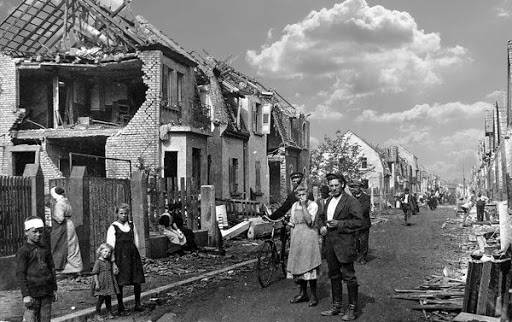
The catastrophe in Oppau served to describe the explosion of the chemical plant of the Anilin Company in Germany in the novel by A. N. Tolstoy, "Engineer Garin's Hyperboloid."
Bosch founded IG Farben, the largest chemical and technological conglomerate of the time. For personal and professional reasons, Bosch was opposed to Nazi anti-Semitism. Among his closest associates in 1933 there were several Jews. He saw a big problem in the suppression and dismissal of Jewish scholars and criticized Nazi politics hostile to science. In particular, Bosch rejected anti-Semitic legislation and advocated for the stay of Jewish scholars in Germany. He offered help to his colleague, Fritz Haber, when he was expelled in 1933, and many fellow specialists turned his back on him. Bosch appeared with all the IG Farben board members remaining at that time at a ceremony organized by Max Planck in January 1935 on the occasion of the anniversary of the death of Gaber, which was forbidden to all university workers by decree of the Reich Minister of Science, Education and Public Education Bernhard Rust.
In 1937, under the pressure of Nazi laws, all workers of IG Farben of Jewish origin were fired.
Bosch was of the opinion that positions in industry, economics, and science should be taken by professionals from these fields, not Nazi politicians. With this he linked the hope of preventing the worst. He realized too late that this hope was false and that he became an accomplice in the crimes of the Nazi regime. Bosch told Richard Willstätter about a meeting with Hitler at which he, in his own words, warned Hitler that the expulsion of Jewish scientists would set German physics and chemistry a hundred years ago. In response, Hitler exclaimed: "Then we will work for a hundred years without physics and chemistry!" Then he called his adjutant and, with exaggerated politeness, declared that adviser Karl Bosch wanted to leave. From international political sanctions Bosch saved only international fame.
On June 7, 1939, Bosch made a speech at the annual meeting of the German Museum Museum Munich saying that “science can flourish only in conditions of freedom, and that the economy and the state will inevitably perish if science is exposed to such a stifling political, worldview and racial restrictions, as under National Socialism. " Subsequently, Rudolph Hess demanded that Bosch be deprived of all posts and forbidden to speak publicly. Bosch really lost his various posts and, under pressure from the National Socialists, was forced to resign as chairman of the board of IG Farben. In the last years of his life, Bosch suffered from deep depression and in 1939 even attempted suicide. He died in 1940.
Sources:
Nechaev I. Chemical weapons.
Encyclopedia of Brockhaus and Efron.
Wikipedia.
Handbook of a chemist. M., 1985.
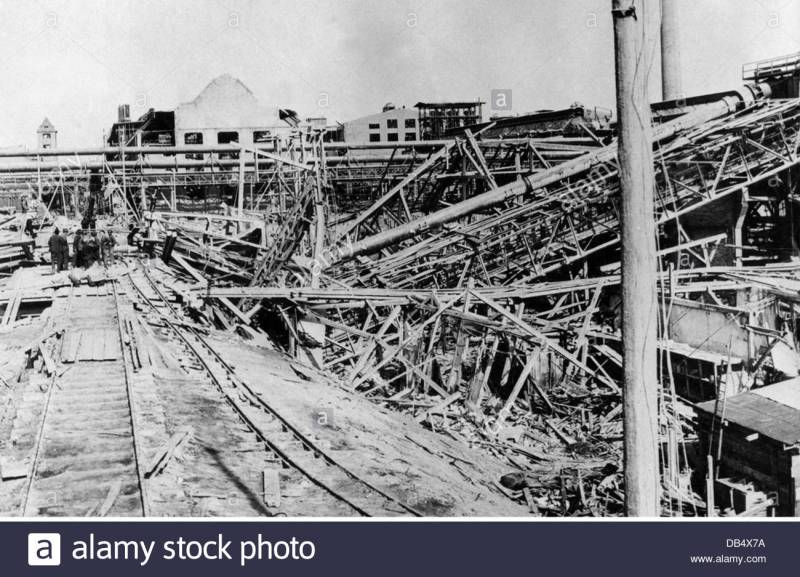
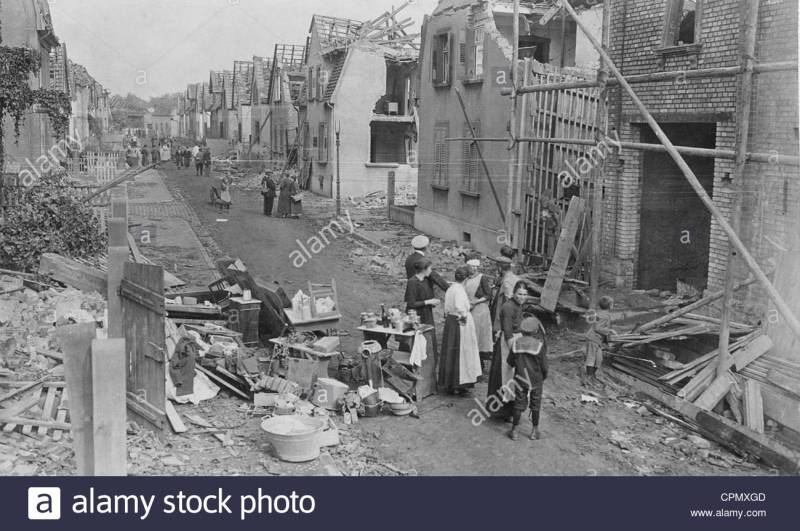
Information